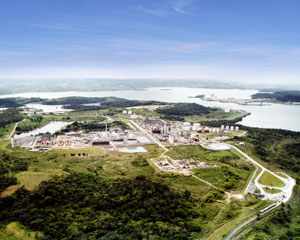Nearly one third of world’s energy is produced for industrial purposes, an increasing share of which is occurring in the developing world. This raised industrial output, however, has come at the cost of more pollution. Less stringent environmental standards are one factor for the developing world’s attractiveness for such highly carbon-emitting industries as cement, chemicals, and pulp and paper. Yet outside of the developed world, some multinational companies are taking steps to curb the environmental impact of their businesses, and are often able to cut costs, by utilizing biomass energy.
Dow, a manufacturer of chemicals, is one such company. In December of last year it announced the construction of a biomass cogeneration plant at the company’s chlorine and caustic soda (chlor-alkali) plant in Aratu, Brazil. By burning eucalyptus wood to produce steam and electricity, the company expects to conserve 200,000 cubic meters of natural gas each day. In the process it will also greatly cut its expenses, as steam and electricity account for around half of the chlor-alkali production process.
In the pulp and paper industry there is Mondi. The company has installed biomass facilities in places as diverse as South Africa, Bulgaria and Poland to generate electricity for its operations. In fact, nearly four-fifths of its power is produced at its own plants, with more than half from biomass sources—primarily residues from pulp and paper manufacturing.
Then there is cement, which is notorious for its carbon emissions. Yet in this industry too, some producers are gradually realizing the benefits of biomass energy. Cemex, a company based in Mexico, has responded to incentives given by the United Nations Framework Convention on Climate Change, substituting biomass for fossil fuels at two of its facilities. Its plants in Caraclolito, Colombia and Colorado, Costa Rica now generate process heat using rice and coffee husks, sawdust, and palm residues. ACC, an Indian subsidiary of the Swiss-based Holcim, is developing a unique biomass system that utilizes algae. The algae not only sequester emitted carbon dioxide, but in turn recycle these emissions by producing oil which can be utilized as fuel.
Even food and beverage makers are incorporating biomass in their manufacturing processes. This year Pepsi announced plans to build two cogeneration facilities in the Philippines. The 1.2 and 2.2 megawatt plants will likely utilize rice husks and wood chips to produce both heat and electricity for making beverages. The company expects to build a total of 11 such biomass plants in the Philippines alone. Pepsi is also known to use biomass boilers at its manufacturing facilities in India. Preceding Pepsi’s delve into biomass was AmBev, now the world’s largest brewer. In 2004 the company began incorporating biomass energy into its Brazilian plants. Through the combustion of wood chips and rice and coconut husks, seven of its breweries are now able to generate process steam in a more environmentally-friendly manner.
As the leaders in their respective industries, the success of these companies in the utilization of biomass energy will influence others to follow. Although industry is shifting to the developing world, environmental degradation need not.

